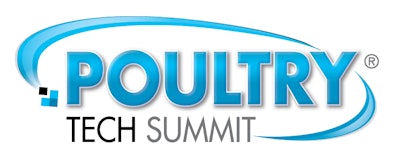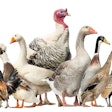
The 2023 Poultry Tech Summit showcased a number of innovative technologies which will improve the performance of poultry operations, here are some that I think will be impactful:
1. Sex separate rearing of broilers may become more common with the help of innovations developed by both Targan and Xiashu Intelligent Technology Company. Sex separate rearing will allow for rations to be more closely formulated for the birds’ needs and will result in more uniform flocks arriving at the processing plant.
2. Chick and poult vaccination in the hatchery may become more effective with automated individual post-hatch dosing from Targan.
3. Prism Controls’ equipment for sensing smoke and controlling fans and ventilation reduces the damage caused by poultry house fires.
4. Innovative Water Concepts combines high pressure water and air in a spray to produce microdroplets of water that offer a more effective means of rinsing poultry carcasses and can improve food safety.
5. GTRI’s demonstrated how virtual reality can allow workers to help a robot perform processing tasks that artificial intelligence algorithms can’t direct to an acceptable level of accuracy.
6. Ancera has new tools for tracking the efficacy of our controls for coccidia and Salmonella on the farm.
7. Automation in the plant increases the value of bird uniformity and accurate weight predictions, and Intelia Technologies showed how machine learning and artificial intelligence can improve these predictions.
8. Agrimesh and AGL Technology each showed how systems for controlling the environment in sections of the house individually to have more uniform conditions throughout the house can both improve bird performance and reduce utility costs.
9. Axitan showed how endolysins, enzymes produced by bacteriophages to poke holes in the cell walls of specific bacteria, can be produced by genetically engineered algae or bacteria and fed to birds to attack Campylobacter perfringens and reduce the impact of necrotic enteritis.
In addition to presenting these specific innovations, I also picked up some interesting thoughts and perspectives at the Summit.
· Evan Sadlon from Mtech Systems said that one of the most significant findings from the correlation of data collected in broiler houses and bird performance is the significant positive impact of properly preheating the poultry house before the chicks arrive.
· Gordon Butland, a consultant for G&S Agri, said that to take advantage of all the data we are collecting every day, poultry companies need a data culture in their organization, and they need their meetings to revolve around the data in the dashboard.
· William Herring, from Cobb Vantress, said that digital phenotyping of breeder selection candidates using artificial intelligence is going to be as big a change and as impactful for primary breeders as whole genome sequencing.
· Erik Hoeven, from NestBorn, discussed the move in some European countries to on-farm hatching of broilers, and I came away from the Summit wondering how on-farm hatching will fit in an era of automated efficient individual bird handling, sexing and vaccination at the hatchery?
· Finally, I keep wishing HPAI would die out in wild bird populations; but David Suarez, USDA ARS, said that each spring a naïve population of baby birds is hatched, and this provides a new crop of unprotected hosts for the virus.


















